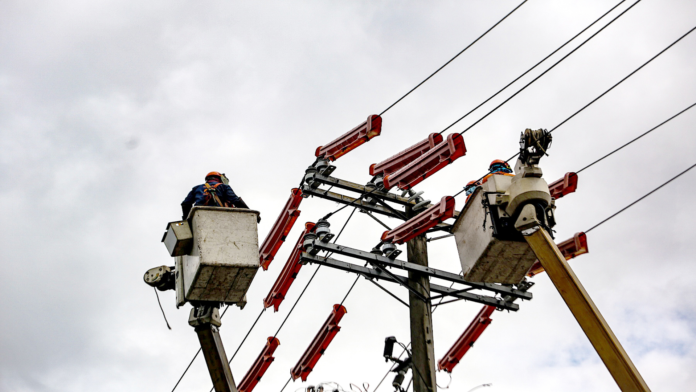President Ferdinand R. Marcos Jr. on Friday called on the country’s key energy players to make sure there will be “reliable power at all times.”
Marcos made the call during the historic switch-on of the Mindanao-Visayas Interconnection Project (MVIP), as he hoped that there would be no repeat of the massive blackout that hit Western Visayas earlier this month.
“We cannot afford to have another round of this costly interruption not only in Panay Island but anywhere in the country. So, let’s move forward with the lessons that we have gained from this blackout and [make] sure this massive inconvenience and loss for our people should not occur again,” Marcos said in a speech delivered at Malacañan Palace in Manila.
“The realization of our ‘One Nation, One Grid’ aspiration is definitely a crucial turning point for this country in ensuring reliable power at all time,” he added.
Noting the PHP3.8 billion in economic losses in Iloilo alone because of the recent power outage in Western Visayas, Marcos said interconnection projects such as the MVIP would help spur socio-economic development.
Marcos expressed optimism that the Hermosa-San Jose 500-kilovolt transmission lines and the 230-kilovolt Cebu-Negros-Panay Backbone Project will be completed by February and March this year, respectively.
He also stressed the National Grid Corporation of the Philippines’ (NGCP) “immense responsibility and role” in maintaining the stability of the country’s grid, including the need to ensure the completion of critical interconnection projects and undertake activities to promote a “safe and reliable” grid operation.
“We realize these are daunting tasks but I call on you to faithfully fulfill these obligations which are so necessary for the progress of our country. Let me reiterate the need for greater responsibility, transparency, and accountability among key players in our power sector, with NGCP as the singular operator of our country’s united power grid,” he said.
“I assure that similar support and cooperation will always be extended by (the) government to ensure the timely completion of all the significant transmission projects, particularly those that will relieve congestion, as well as those needed to deliver additional capacities that can be provided by renewable energy,” he added.
Marcos said he has directed the Energy Regulatory Commission (ERC) to complete the reset of the NGCP’s rate “without further delay.”
The reset would pave the way for a refund to consumers, as this would he reflected in lower transmission rates on power consumers’ electricity bills covering 2016 to 2020.
Marcos said he has also instructed the Department of Energy and the ERC to look into the proposal of allowing third parties to construct transmission projects at the pace required by the country’s power needs.
“Each of us here has a shared responsibility to ensure the reliability and the adequacy of energy supply at all times. I strongly believe that a brighter future awaits us so, therefore, I enjoin your cooperation and commitment as we achieve our goal for our country’s total electrification in the soonest possible time,” he said.
During the event at Malacañan, Marcos led the ceremonial switch-on of the MVIP, signifying the unification of the Philippines’ power grids.
Spearheaded by the NGCP, the project worth PHP52 billion aims to enhance the stability and reliability of the country’s power supply by enabling the sharing of power resources among the three major Islands.
The MVIP connects the Mindanao and Visayas grids via a 184 circuit-kilometer High-Voltage Direct Current (HVDC) submarine transmission line, which runs from Dapitan, Zamboanga del Norte to Santander, Cebu and includes 526 circuit-kilometers overhead lines.
The project has been designed to initially carry 450 megawatts (MW) of electricity, with the capacity to expand to 900MW to meet future demands.
For his part, NGCP president Anthony Almeda assured Marcos that the country’s transmission system would keep up with the demands amid the growing renewables capacity.
“With our strong partnership with DOE (Department of Energy) and ERC, at the arc of NGCP, we already have access to the technology powering the global leaders in the renewable energy space,” he said.
Almeda said the country’s transmission system is at the onset of modernization, preparing to accommodate power from renewable energy (RE) projects.
“With this, we are more than ready and willing to take on the laudable and ambitious dream of a greener, more RE-friendly energy industry to keep up with the demands of the rapidly developing country and changing economic landscape,” he added.
Almeda said the NGCP is ready to build transmission infrastructure that the country needs to achieve the administration’s RE aspirations with the help of the DOE and ERC.
Earlier, the DOE said it has awarded 1,186 RE service contracts with a total equivalent potential capacity of 132.9 gigawatts.
“There are so many economic opportunities for our country, and we must be ready to take this on. It all begins with a stable energy industry and a strong partnership,” Almeda added.
In the same event, DOE Secretary Raphael Lotilla underscored the need to fast track the country’s transmission system.
“Without transmission lines from new power generation plants to the grid, their available capacity would have been wasted or stranded,” Lotilla said.
The DOE chief added his agency is completing the mapping out of critical transmission lines of NGCP to make the country’s power system interconnected. (PNA)


